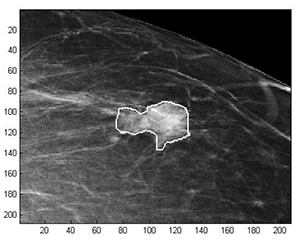Latest News Archive
Please select Category, Year, and then Month to display items
25 May 2022
|
Story Alicia Pienaar

The Dean of the Faculty of the Humanities, Prof Heidi Hudson, has the pleasure of inviting you to the inaugural lecture of Prof Paul Fouché in the Department of Psychology.
Event details:
Date: Wednesday 1 June 2022
Time: 17:30 SAST
Venue: Equitas Auditorium, UFS Bloemfontein Campus
RSVP before or on 27 May 2022 to Anneke Diesel, +27 51 401 9314 or email denobilia@ufs.ac.za
Subject:
Understanding Greatness: Dissecting the eminent personality from a psychobiographical approach
About the Speaker:
Paul Fouché has been employed at the UFS since 2007. Currently, he is a professor and a registered counselling psychologist with the HPCSA and an active member of the Psychological Society of South Africa. He is also an NRF C-rated researcher. As research supervisor/co-supervisor, he has graduated 115 postgraduate students.
He served on the editorial committee of Acta Academica, was guest editor of the Journal of Psychology in Africa, and co-editor of special issues on psychobiography for Europe’s Journal of Psychology and two books by Springer. Paul is the
coordinator of the BPsych Honours programme and lectures in the Applied Master’s programme.
Academic credentials:
PhD: 1999, Psychobiography, Nelson Mandela University, South Africa
MSocSc cum laude: 1993, Counselling Psychology, University of the Free State, Bloemfontein, South Africa
BSocSc Honours cum laude: 1990, Psychology, University of the Free State, Bloemfontein, South Africa
BSocSc: 1989, Psychology, University of the Free State, Bloemfontein, South Africa
Mathematical methods used to detect and classify breast cancer masses
2016-08-10
 Examples of Acho’s breast mass
Examples of Acho’s breast mass
segmentation identification
Breast cancer is the leading cause of female mortality in developing countries. According to the World Health Organization (WHO), the low survival rates in developing countries are mainly due to the lack of early detection and adequate diagnosis programs.
Seeing the picture more clearly
Susan Acho from the University of the Free State’s Department of Medical Physics, breast cancer research focuses on using mathematical methods to delineate and classify breast masses. Advancements in medical research have led to remarkable progress in breast cancer detection, however, according to Acho, the methods of diagnosis currently available commercially, lack a detailed finesse in accurately identifying the boundaries of breast mass lesions.
Inspiration drawn from pioneer
Drawing inspiration from the Mammography Computer Aided Diagnosis Development and Implementation (CAADI) project, which was the brainchild Prof William Rae, Head of the department of Medical Physics, Acho’s MMedSc thesis titled ‘Segmentation and Quantitative Characterisation of Breast Masses Imaged using Digital Mammography’ investigates classical segmentation algorithms, texture features and classification of breast masses in mammography. It is a rare research topic in South Africa.
Characterisation of breast masses, involves delineating and analysing the breast mass region on a mammogram in order to determine its shape, margin and texture composition. Computer-aided diagnosis (CAD) program detects the outline of the mass lesion, and uses this information together with its texture features to determine the clinical traits of the mass. CAD programs mark suspicious areas for second look or areas on a mammogram that the radiologist might have overlooked. It can act as an independent double reader of a mammogram in institutions where there is a shortage of trained mammogram readers.
Light at the end of the tunnel
Breast cancer is one of the most common malignancies among females in South Africa. “The challenge is being able to apply these mathematical methods in the medical field to help find solutions to specific medical problems, and that’s what I hope my research will do,” she says.
By using mathematics, physics and digital imaging to understand breast masses on mammograms, her research bridges the gap between these fields to provide algorithms which are applicable in medical image interpretation.